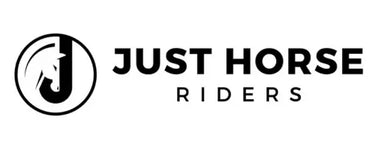An Insight into Equine Infectious Anemia: Protecting Our Equine Friends
Equine Infectious Anemia (EIA) has recently emerged as a significant concern within the Texas equine community. The virus recently made headlines with the confirmation of three cases in El Paso, Ellis, and Hunt counties. This article delves into the **nature of EIA**, **prevention techniques**, and the **role of diagnostics** in managing this disease.
Understanding Equine Infectious Anemia
**Equine Infectious Anemia**, often referred to as "swamp fever," is a viral disease that targets the immune system of horses. It's mainly transmitted through the exchange of body fluids, often by blood-feeding insects such as horseflies or via contaminated instruments. Horses infected with this virus remain carriers for life, even if they exhibit no symptoms.
Given that horses can be asymptomatic carriers, the potential for unnoticed transmission is high. Symptoms, when they do appear, can include **progressive weight loss, muscle weakness, poor stamina, fever, depression, and anemia**.
Recent Cases in Texas
The recent confirmation of three EIA cases in Texas involved Quarter Horses in different counties: El Paso, Ellis, and Hunt. These horses were euthanized to prevent further spread, and their premises were quarantined. This incident has highlighted the necessity for **vigilance and stringent biosecurity measures** within the equine industry.
As of the latest reports, EIA continues to be a threat due to its **highly contagious nature** and the current lack of a vaccine or cure.
The Importance of the Coggins Test
The **Coggins test** is a pivotal diagnostic tool for EIA, screening for antibodies that indicate the presence of the virus. In the United States, many states mandate a negative Coggins test for horses traveling interstate. This requirement underscores the importance of **regular testing** to manage and contain the disease.
**No horse owner should overlook the Coggins test**, given its role in early detection and prevention of EIA outbreaks. Regular testing can mean the difference between controlling the spread of the disease and facing a widespread outbreak.
How to Prevent EIA
- Regularly test your horses for EIA using the Coggins test.
- Implement strict biosecurity measures, such as using insect repellents and ensuring sterile medical equipment.
- Educate yourself and others about EIA and its possible transmission methods.
- Support organizations like the Equine Disease Communication Center (EDCC), which are crucial in providing up-to-date information.
The Role of the Equine Disease Communication Center
The **Equine Disease Communication Center (EDCC)** plays an indispensable role in protecting the equine community. This organization aggregates and disseminates verified disease reports, ensuring that horse owners and the industry stay informed. Supported by various industry donations, EDCC offers **open access to crucial information** about infectious diseases affecting horses.
By partnering with the EDCC, horse owners get timely and accurate data, helping them take proactive steps in safeguarding their horses.
Further Research and Future Directions
There is a pressing need for more research into the **epidemiology of EIA**, its transmission vectors, and the development of **effective diagnostic tests and treatments**. Future studies could explore potential vaccines or new diagnostic methods that can detect the virus even more accurately or at earlier stages.
Additionally, the economic ramifications of EIA outbreaks warrant thorough investigation, as they have significant impacts on the equine industry. Public health policies should evolve to reflect these findings, further enhancing preventive measures and protocols.
Conclusion
The confirmation of EIA cases in Texas serves as a powerful reminder of the ever-present threat of this disease. By being vigilant and taking **proactive steps**, we can better protect our beloved equine companions. **Regular testing, stringent biosecurity measures, and unwavering support for organizations like the EDCC** are key strategies in this ongoing battle.
In the meantime, horse owners can help by staying informed, implementing robust preventive measures, and participating actively in the community to share knowledge and best practices.
References: The Horse


